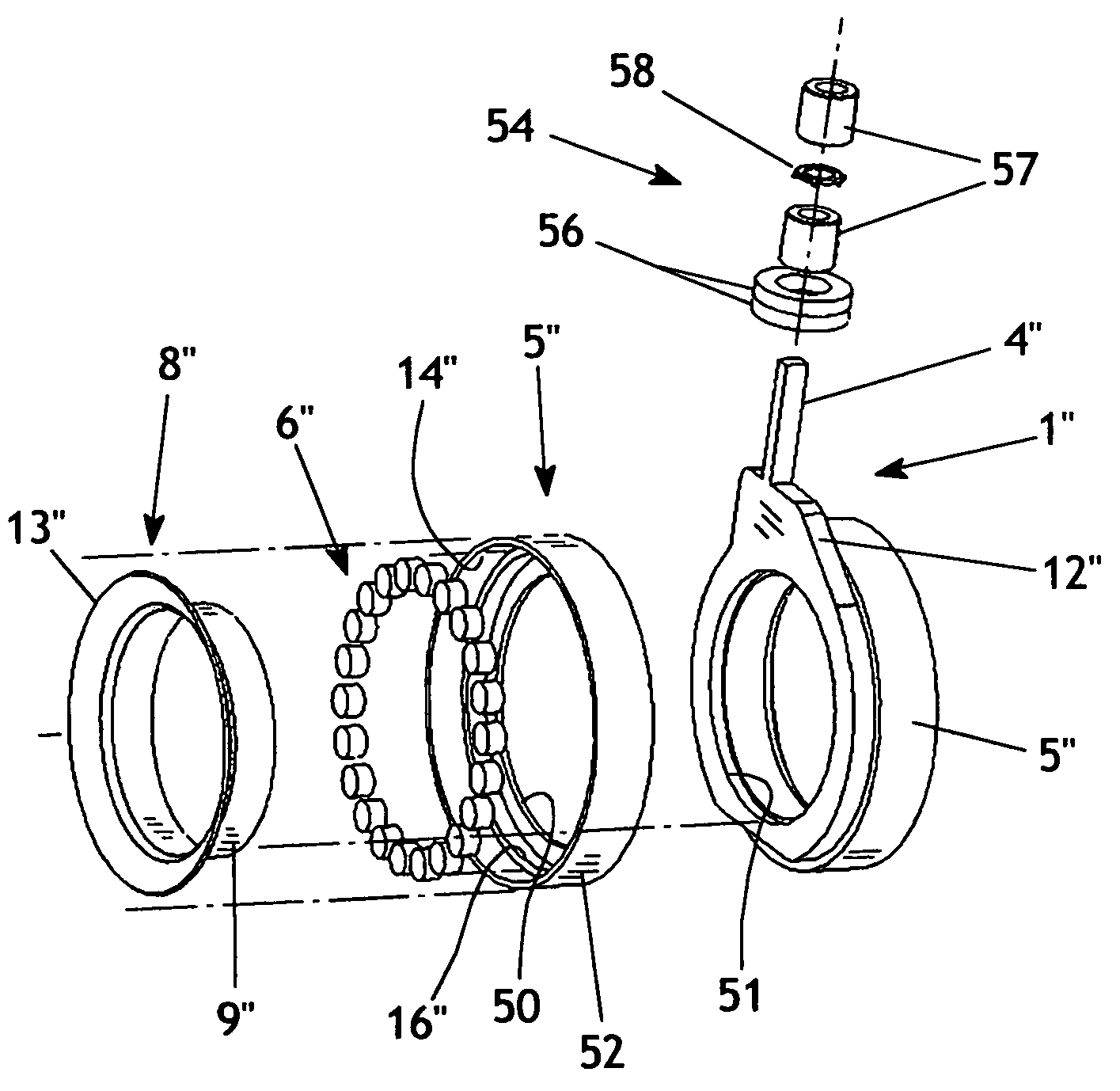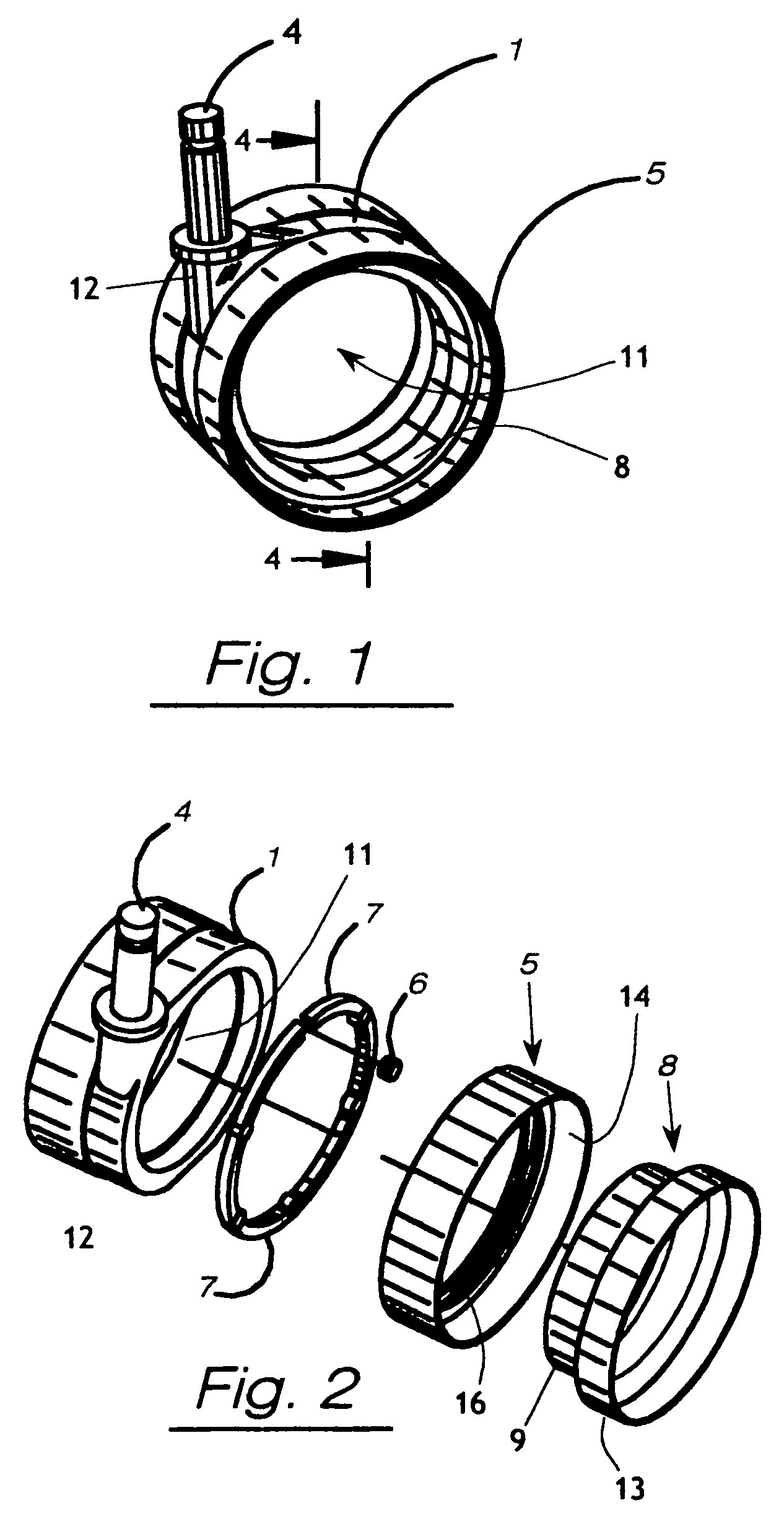Hubless caster
a hubless, caster technology, applied in the field of casters, can solve the problems of impairing the usability of the caster, inability to easily turn about the pin pivot, and the attachment of the wheel to the axle, so as to achieve the effect of improving rolling, improving the appearance of the caster, and virtually eliminating the friction of the lin
- Summary
- Abstract
- Description
- Claims
- Application Information
AI Technical Summary
Benefits of technology
Problems solved by technology
Method used
Image
Examples
Embodiment Construction
[0042]The present invention generally comprises a hubless caster assembly for use with furniture, equipment, carts, and other conveyances. This new device provides better stability, better rolling functionality, and many flexible design implementations.
[0043]With regard to FIGS. 1–4, the hubless caster assembly includes a ring body 1 having an open center portion 11. A kingpin 4 extends outwardly from the ring body 1 and is supported by an integral boss 12. (In the drawings, similar reference characters denote similar elements throughout the several views.) The kingpin may be received in a generally vertically oriented receptacle for pivoting motion about the kingpin axis, as is known in the prior art. The assembly also includes a centering ring 8, which is provided with an annular body 13 and a reduced diameter portion 9 extending coaxially from the body 13. A toroidal wheel 5 includes an outer surface adapted to be ground-engaging, and an inner annular surface 14. A bearing race g...
PUM
 Login to View More
Login to View More Abstract
Description
Claims
Application Information
 Login to View More
Login to View More - R&D
- Intellectual Property
- Life Sciences
- Materials
- Tech Scout
- Unparalleled Data Quality
- Higher Quality Content
- 60% Fewer Hallucinations
Browse by: Latest US Patents, China's latest patents, Technical Efficacy Thesaurus, Application Domain, Technology Topic, Popular Technical Reports.
© 2025 PatSnap. All rights reserved.Legal|Privacy policy|Modern Slavery Act Transparency Statement|Sitemap|About US| Contact US: help@patsnap.com



